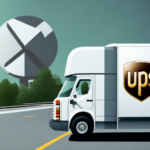Importance of Last Mile Delivery for E-commerce
Last mile delivery is the final and most critical step in the delivery process, where products are transported from a distribution center or delivery hub directly to the customer's doorstep. This stage is often the most expensive and time-consuming, but it plays a pivotal role in shaping the customer's perception of a brand. With the exponential growth of e-commerce, efficient last mile delivery has become indispensable for businesses aiming to meet customer expectations and maintain a competitive edge.
Why Last Mile Delivery is Crucial for E-commerce Businesses
Last mile delivery represents the culmination of the customer journey, making it a key determinant of overall satisfaction. It is frequently the only personal interaction customers have with a brand, emphasizing the need for reliability and efficiency. Challenges such as high rates of failed deliveries, traffic congestion, and varying customer availability can impact both costs and customer satisfaction. Implementing technologies like GPS tracking and real-time updates helps mitigate these issues by enhancing delivery accuracy and transparency.
Customer Satisfaction and Retention
Efficient last mile delivery directly influences customer satisfaction and retention rates. Timely and reliable deliveries foster trust and encourage repeat business, while delays and inaccuracies can lead to dissatisfaction and lost sales. According to a 2023 ShipScience report, 85% of customers are more likely to shop again with a retailer if they experience a seamless delivery process.
Cost-Effectiveness and Business Growth
Partnering with specialized last mile delivery companies can significantly reduce operational costs and enhance profitability. These companies leverage advanced technologies and optimized logistics to streamline delivery processes, minimizing expenses related to transportation, labor, and failed deliveries. By outsourcing last mile delivery, businesses can focus on their core competencies while ensuring efficient and cost-effective delivery services.
Economic Benefits of Last Mile Delivery Outsourcing
Outsourcing last mile delivery allows businesses to benefit from the expertise and infrastructure of specialized providers. This collaboration can lead to reduced overhead costs, improved delivery times, and enhanced scalability, enabling businesses to handle peak demand periods without compromising on service quality.
Enhancing Profitability through Efficiency
Efficient last mile delivery processes contribute to higher profitability by reducing delivery times and minimizing costs associated with failed deliveries. Real-time data analytics and route optimization technologies enable delivery companies to maximize efficiency, ensuring that packages reach customers swiftly and reliably.
Technological Advancements in Last Mile Delivery
Technology plays a transformative role in enhancing the efficiency and reliability of last mile delivery. Innovations such as GPS tracking, real-time routing, electronic proof of delivery (ePOD), and autonomous delivery vehicles are revolutionizing the delivery landscape, offering new opportunities for optimization and customer engagement.
GPS Tracking and Real-Time Updates
GPS tracking enables delivery companies to monitor vehicles in real-time, allowing for dynamic route adjustments based on traffic conditions and other variables. This leads to more accurate delivery time estimates and reduces the likelihood of delays, thereby improving customer satisfaction.
Autonomous and Drone Deliveries
The integration of autonomous vehicles and drones into last mile delivery is poised to redefine the industry. These technologies promise faster delivery times, reduced labor costs, and the ability to reach remote or congested areas more effectively. Companies like Amazon and Walmart are actively experimenting with these innovations to enhance their delivery capabilities.
Sustainable Practices in Last Mile Delivery
As environmental concerns become increasingly important, sustainable last mile delivery solutions are gaining traction. Implementing eco-friendly practices not only helps reduce carbon emissions but also enhances brand reputation among environmentally conscious consumers.
Electric Delivery Vehicles
Using electric delivery vehicles significantly lowers greenhouse gas emissions and reduces reliance on fossil fuels. Many last mile delivery companies are transitioning to electric fleets to promote sustainability and comply with increasingly stringent environmental regulations.
Optimizing Delivery Routes for Sustainability
Route optimization not only improves efficiency but also minimizes fuel consumption and traffic congestion. By leveraging data analytics and AI-driven algorithms, delivery companies can design routes that reduce travel distances and environmental impact.
Overcoming Challenges in Last Mile Delivery
Last mile delivery presents several challenges, including traffic congestion, varied customer availability, and high delivery costs. Addressing these challenges requires strategic planning, technological integration, and innovative solutions to ensure efficient and reliable delivery services.
Addressing Traffic and Logistical Obstacles
Traffic congestion is a significant hurdle in urban areas, leading to delays and increased operational costs. Implementing real-time traffic monitoring and adaptive routing can help mitigate these issues by enabling dynamic adjustments to delivery routes.
Mitigating Failed Deliveries
Failed deliveries due to incorrect addresses or absent customers can adversely affect customer satisfaction and increase costs. Implementing verification processes and providing customers with real-time updates can reduce the incidence of failed deliveries.
Future Trends and Innovations in Last Mile Delivery
The last mile delivery sector is rapidly evolving, driven by technological advancements and changing consumer expectations. Anticipated trends include greater automation, increased use of AI and machine learning for route optimization, and the expansion of contactless delivery options.
Integration of AI and Machine Learning
Artificial intelligence and machine learning are enhancing delivery operations by predicting demand patterns, optimizing routes, and improving delivery accuracy. These technologies enable delivery companies to operate more efficiently and respond proactively to changing conditions.
Expansion of Contactless Deliveries
The COVID-19 pandemic has accelerated the adoption of contactless delivery methods. Even as the pandemic subsides, the demand for contactless deliveries is expected to remain high, driven by consumer preferences for safety and convenience.
Best Practices for Seamless Last Mile Deliveries
Implementing best practices in last mile delivery can significantly enhance efficiency, reduce costs, and improve customer satisfaction. Key practices include effective inventory management, leveraging technology, and maintaining transparent communication with customers.
Effective Inventory Management
Accurate inventory management ensures that products are readily available for delivery, reducing delays and enhancing customer satisfaction. Utilizing inventory management software and maintaining optimal stock levels are essential for seamless last mile deliveries.
Transparent Communication with Customers
Keeping customers informed about their delivery status through real-time updates and notifications fosters trust and satisfaction. Providing estimated delivery times and enabling customers to track their packages enhances the overall delivery experience.
Conclusion
Last mile delivery is a critical component of the e-commerce ecosystem, directly impacting customer satisfaction and business profitability. By leveraging specialized delivery companies, embracing technological advancements, and adopting sustainable practices, businesses can optimize their last mile delivery operations. This not only enhances operational efficiency but also drives customer loyalty and long-term growth. As the industry continues to evolve, staying abreast of emerging trends and best practices will be essential for businesses aiming to thrive in the competitive e-commerce landscape.




















